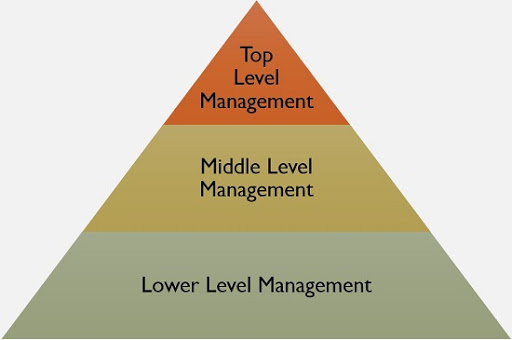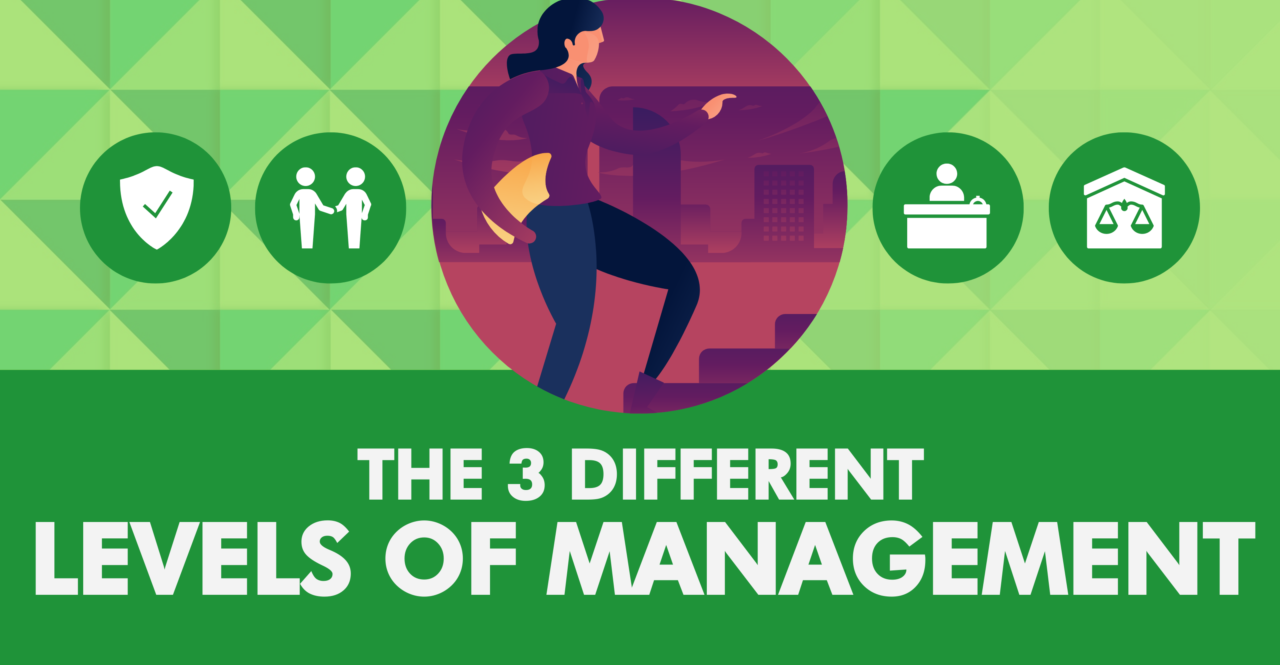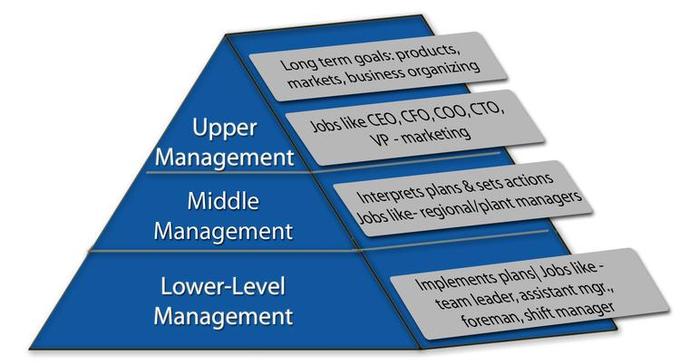Explain the Functions of Different Levels of Managements
The employees at this management level are at the lowest level of the managerial hierarchy. Planning organizing leading and controlling1 Consider what each of these functions entails as well as how each may look in action.

Managerial Hierarchy Levels Of Management Its Function
Planning is the purpose of ascertaining in advance what is supposed to be done and who has to do it.

. Middle-level managers are responsible for executing organizational plans which comply with the companys policies. Functions performed at top level of management are. Lower managers are task or process oriented managing functional specialists and projects.
Low level Supervisory Operative First-line managers. It includes the supervisors foreman superintendents and other junior executives. Terry classified management functions into four viz a planning b organising c activating and d controlling.
Top level Administrative level. The levels of management can be classified in three broad categories. The following are the key functions of top level management.
This level is also known as Operational or Supervisory Level of Management. Laying down the objectives and broad policies of the business enterprise. Management is defined as the procedure of organising directing planning and controlling the efforts of organisational members and of managing organisational sources to accomplish particular goals.
Davis there are three management functions viz a planning b motivating and c controlling whereas GR. Management is the process of getting work done with the aim of achieving the organisational objectives in an efficient and effective manner. Taking decisions regarding activities to be performed.
Responsible for welfare and survival of the organisation. Top-level managers are responsible for controlling and overseeing the entire organization. Information as required at different levels of management can be classified as operational tactical and strategic.
They perform the tasks assigned by the middle level management. To make efforts to coordinate the different functions of management. Top level management consists of Board of Directors Managing Directors or President.
The article discusses in detail about the 5 basic functions of management which are - planning organizing staffing directing and controlling. They are mainly grouped on the basis of departments or the divisions they work in. Levels of Management are broadly classified into three.
The level of management determines a chain of command the amount of authority status enjoyed by any managerial position. This level consists of the board of directors and managing director. Middle level Executory.
Middle-level management is responsible for the effective implementation of plans and objectives set by top-level management. Different experts have classified functions of management in different manner. Those in this type of management position are tasked with understanding their organization within the larger context of its industry and making adjustments to their business.
The three levels of management typically found in an organization are low-level management middle-level management and top-level management. The lower level management is accountable to the middle-level management who in turn are accountable to the top executives. Moreover they take instructions from the upper level of management.
Middle managers are in the middle acting as a bridge between upper management and certain work groups. To provide necessary instructions and guidance to subordinates. Originally identified by Henri Fayol as five elements there are now four commonly accepted functions of management that encompass these necessary skills.
Based upon these seven functions Luther Gulick coined the word POSDCORB which generally represents the initials of these seven functions ie. Lower level management performs the tasks assigned by the middle level management as per the directions. The level of management which deals with the non-managerial staff oversees their work and interacts with them is included in the low level management.
To submit a progress report to the middle-level management. Operational information relates to the day-to-day operations of the organisation and thus is useful in exercising control over the operations that are repetitive in nature. This is useful to visualize in a chart where top management is logically at the top overseeing the entire organization.
Managerial or the Top Level Management. The roles and responsibilities of the top level of management can be summarized as follows. Functions of Lower Level Management.
It is the supreme source of power since it. Top level management such as chief financial officers CFO board directors managing directors or chief executive officers CEO is the highest tier of management within an organization. Making strategies and goals for the organisation.
Lower or operating level management consists of Floor ManagersSupervisors. Framing policies for the organisation. To assign responsibilities and duties to the employees.
P stands for Planning O for Organizing S for Staffing D for Directing Co for Co-ordination R for reporting B for Budgeting. Level of Management determines the chain of control and the quantity of power and position that is given to any management role to an individual in an organization. There are three different levels of management.
Issuing necessary instructions for the preparation of department-specific budgets schedules procedures etc. To maintain a dose and harmonious relationship among all the employees. But Planning Organizing Staffing Directing and Controlling are widely recognized functions of management.
Middle level management consists of Vice President MarketingFinanceProduction.

The 3 Different Levels Of Management Sprigghr

Levels And Functions Of Management Planning Controlling With Examples


Comments
Post a Comment